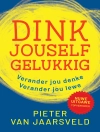Christianity Today Book Award winner
Imagine the scenarios:
– a CEO successfully negotiates a corporate merger, avoiding hundreds of layoffs in the process
– an artist completes a mosaic for public display at a bank, showcasing neighborhood heroes
– a contractor creates a work-release program in cooperation with a local prison, growing the business and seeing countless former inmates turn their lives around
– a high-school principal graduates 20 percent more students than the previous year, and the school's average scores go up by a similar percentage Now imagine a parade in the streets for each event. That's the vision of Proverbs 11:10, in which the tsaddiqim—the people who see everything they have as gifts from God to be stewarded for his purposes—pursue their vocation with an eye to the greater good.
Amy Sherman, director of the Center on Faith in Communities and scholar of vocational stewardship, uses the tsaddiqim as a springboard to explore how, through our faith-formed calling, we announce the kingdom of God to our everyday world. But cultural trends toward privatism and materialism threaten to dis-integrate our faith and our work. And the church, in ways large and small, has itself capitulated to those trends, while simultaneously elevating the ’special calling’ of professional ministry and neglecting the vocational formation of laypeople. In the process, we have, in ways large and small, subverted our kingdom mandate.
God is on the move, and he calls each of us, from our various halls of power and privilege, to follow him. Here is your chance, keeping this kingdom calling in view, to steward your faith and work toward righteousness. In so doing, you will bless the world, and as you flourish, the world will celebrate.
Innehållsförteckning
Introduction: The Glorious Vision of Proverbs 11:10
Part I: Theological Foundations
1. What Does a Rejoiced City Look Like?
2. What Do the Righteous Look Like?
3. Why We Aren’t the Tsaddiqim
4. How the Gospel of the Kingdom Nurtures the Tsaddiqim
Part II: Discipling for Vocational Stewarship
5. Integrating Faith and Work: The Status Quo is Inadequate
6. Inspiration
7. Discovery
8. Formation
Part III: Pathways of Vocational Stewardship
9. Deploying Vocational Power: Four Pathways
10. Pathway 1: Bloom Where You’re Planted
11. Pathway 2: Donate Your Skills
12. Pathway 3: Launch Your Own Social Enterprise
13. Pathway 4: Participate in Your Church’s Targeted Initiative
Conclusion
Appendix A: Key Theological Themes Undergirding Vocational Stewardship
Appendix B: A Discussion Guide for Groups
Appendix C: For Further Reference
Appendix D: Index of Profiles by Vocation
Om författaren
Steven Garber is professor of marketplace theology and director of the program in leadership, theology, and society at Regent College, Vancouver, BC. His books include Visions of Vocation and The Fabric of Faithfulness. Married to Meg, they have five children and several grandchildren.












